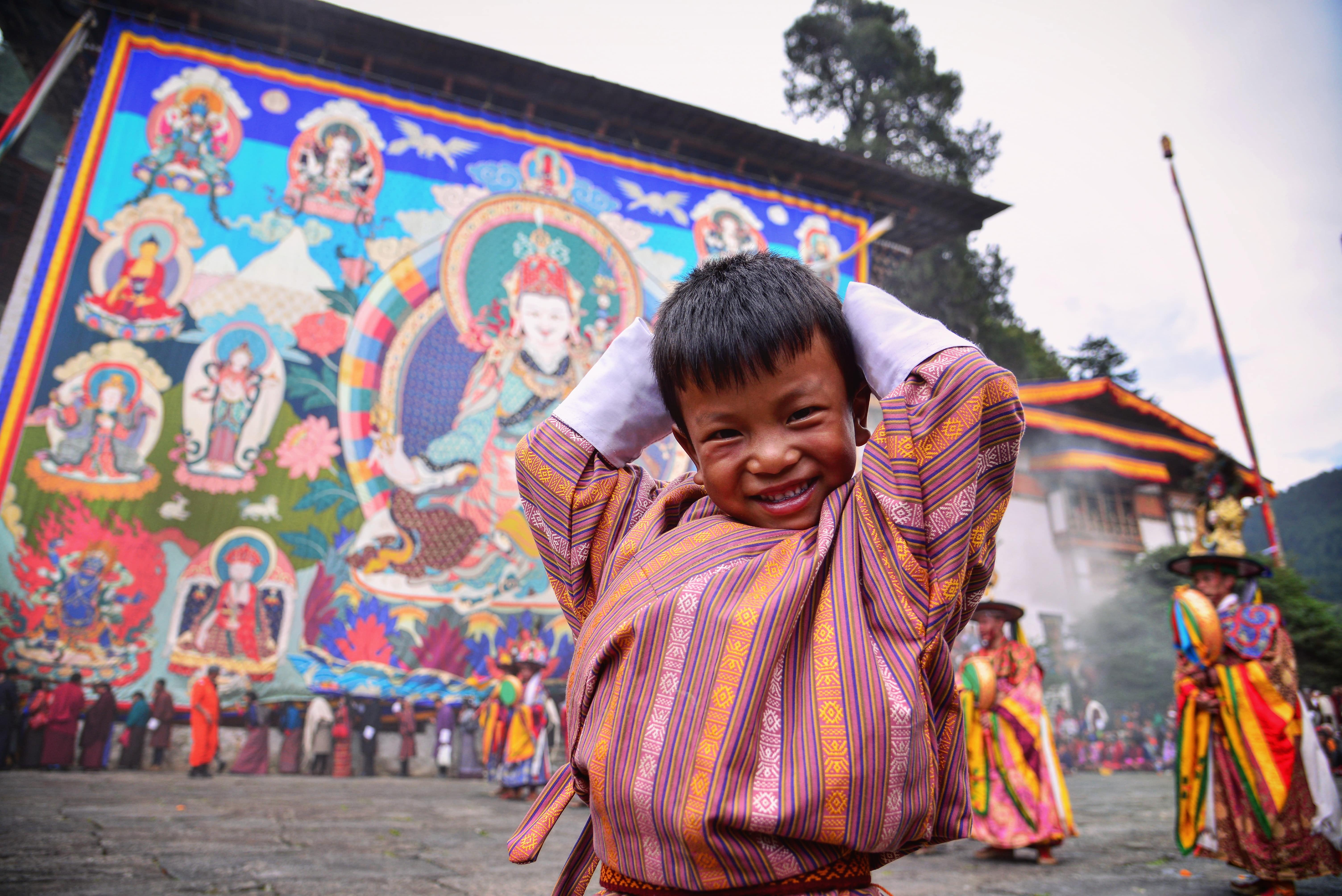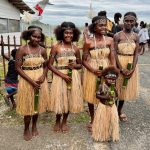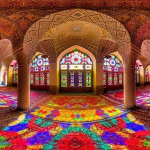Celebrate Life, Culture, and Spirit in the Himalayan Kingdom
Bhutan is a land where celebrations are infused with spiritual depth, joy, and reverence for life. Every year, a series of vibrant festivals—known as Tshechus—unfold across the country, bringing together religion, folklore, music, and community. These events are more than just performances—they’re immersive cultural experiences that reveal the soul of Bhutan.
Table of Contents
Highlights of your Bhutan Festival Journey
- Attend Iconic Festivals: Based on your travel time and interests, your journey can be timed to coincide with one of Bhutan’s major Tshechus—like the Paro, Punakha, or Thimphu Tsechu—for a firsthand glimpse of sacred traditions.
- Masked Dances & Sacred Rituals: Witness stunning Cham (masked) dances performed by monks and dancers in ornate costumes that portray deities, demons, and historic legends, deeply rooted in Vajrayana Buddhism.
- Traditional Archery Competitions: Bhutan’s national sport is more than a game—it’s a lively cultural event. Watch local teams compete in passionate, festive tournaments filled with singing, dancing, and spirited camaraderie.
- Folk Music & Dance: Enjoy authentic performances that celebrate Bhutanese life through rhythmic movement and traditional dress, reflecting the natural cycles and spiritual roots of the culture.
- Cultural Immersion: Beyond festivals, visit sacred monasteries, explore ancient dzongs, and walk through rural villages to better understand Bhutan’s balance of tradition and modernity.
Whether you’re a passionate culture-seeker or a curious traveler, Bhutan’s festivals promise profound insights into the nation’s spiritual and communal heartbeat.
What is a Tshechu?
Tshechu means “tenth day” in Dzongkha and refers to religious festivals held on the 10th day of a lunar month, varying by region. These festivals are dedicated to Guru Rinpoche (Padmasambhava)—the saint who brought Buddhism to Bhutan in the 8th century. Attending a Tshechu is believed to bestow blessings, purify negative karma, and bring spiritual merit. Locals don their finest national attire, and entire communities gather to share in dance, prayer, and joy—making it a sacred and social celebration alike. Many Tshechus are intimate, community-centered events where you might even find yourself rubbing shoulders with the royal family or their guards, adding a uniquely personal touch to your cultural experience.
Signature Festival Experiences
Paro Tsechu (March/April) Held at the majestic Paro Dzong, this is one of Bhutan’s grandest and most widely attended festivals. It features sacred Cham dances and culminates with the unveiling of a giant silk scroll (Thongdrel) depicting Guru Rinpoche—viewing it is believed to purify all sins. Given its scale and spiritual importance, it occasionally draws members of the royal family.
Thimphu Tsechu (September/October) Celebrated at Tashichho Dzong in the capital, this large-scale festival includes iconic dances such as the Eight Manifestations of Guru Rinpoche and the Dance of the Lords of the Cremation Grounds. As a national highlight and major cultural event, it is the festival most likely to be attended by the Bhutanese royal family, attracting dignitaries and thousands of locals and visitors alike.
Punakha Drubchen & Punakha Tsechu (February/March) Held at the historic Punakha Dzong, these twin festivals combine dramatic military reenactments—commemorating Bhutan’s victory over Tibetan invaders—with deeply symbolic Cham dances and the sacred Thongdrel ceremony. Their historical significance and grandeur make them another occasion where members of the royal family may be present.
Ura Yakchoe (April/May) This intimate festival in the Ura Valley features sacred relic rituals and dances invoking protection and blessings. It’s a perfect opportunity to witness community devotion in a village setting.
Kurjey Tshechu (June/July) Held at Kurjey Lhakhang in Bumthang, Kurjey Tshechu honors Guru Rinpoche, whose sacred body imprint is preserved at the temple. The festival features powerful Cham dances depicting his victory over evil forces, offering healing and spiritual renewal. A central highlight is the early morning unfurling of the giant Thongdrel—an embroidered image of Guru Rinpoche—believed to cleanse sins and bestow profound blessings upon all who behold it.
Nimalung Tsechu (June/July) Held at the serene Nimalung Monastery in Bumthang, this intimate festival offers colorful Cham dances, traditional music, and deep spiritual atmosphere. A highlight is the unfurling of a large Guru Rinpoche Thongdrel, believed to bless all who see it.
Jambay Lhakhang Drup (October/November) Held annually in Bumthang during October or November, Jambay Lhakhang Drup is one of Bhutan’s most sacred festivals. It features vibrant masked dances, the dramatic naked dance (Tercham) symbolizing purification, and the fire blessing ceremony (Mewang), where participants leap through flames to cleanse sins. Celebrated at one of the country’s oldest temples, the festival blends profound spiritual rituals with joyful community gatherings, marking the triumph of good over evil.
Trongsa Tsechu (December/January) Set in the ancestral seat of Bhutan’s royal family, this deeply spiritual event ends with the grand unfurling of a sacred Thongdrel—an act believed to cleanse all who behold it.
Haa Summer Festival (July) Celebrate rural Bhutanese life in the Haa Valley through traditional music, dance, archery, and religious rituals. It’s a culturally rich experience with stunning natural backdrops.
Where to Find Festival Schedules
Cultural Etiquette & Travel Tips
- Dress respectfully: Wearing the traditional gho (for men) or kira (for women) is encouraged, especially during festivals and religious visits.
- Observe rituals mindfully: Remain quiet, avoid obstructing performers, and follow your guide’s instructions.
- Plan ahead: Festival dates vary yearly; check the schedule in advance to align with your preferred Tshechu.
Optional Enriching Activities
Personalized Bhutan Stamps – A Creative Keepsake
Design your own Bhutanese postage stamps with personal photos or traditional Bhutanese imagery—a fun and unique way to engage with the local culture and bring home a special souvenir.
Stay at Uma Paro – A Luxury Experience
Relax at the Uma Paro Hotel, a luxury resort by COMO and the wedding venue of Hong Kong celebrity Tony Leung and Carina Lau. Enjoy elegant rooms, wellness amenities, and serene valley views, whether for an overnight stay or a refined afternoon tea.


Traditional Hot Stone Bath – Healing the Bhutanese Way
Unwind in a traditional hot stone bath in a local farmhouse—an ancient therapy believed to relieve fatigue and promote circulation, surrounded by pristine nature and Himalayan tranquility.
Whitewater Rafting Adventure – Thrill Meets Nature
Paddle through the scenic Pho Chhu and Mo Chhu rivers in Punakha for an adrenaline-filled journey that blends natural beauty with outdoor excitement.

These optional activities complement your cultural journey—offering relaxation, wellness, and adventure.
Final Thoughts
Bhutan’s Tshechus are far more than colorful shows—they are sacred moments where devotion, joy, and tradition converge. By planning your journey during festival season, you’ll witness Bhutan at its most soulful and vibrant—and return home not only with memories but with blessings that last a lifetime.
Want to learn more about Bhutan?
Dive into our Ultimate Travel Guide – your one-stop resource for everything from visa rules and packing tips to Bhutanese cuisine, festivals, traditions, and spiritual landmarks. Explore culture, landscapes, and legends for a truly immersive and unforgettable Himalayan journey.
Are You Ready to Experience Bhutan with YPT?
Join us for a transformative journey through the Land of the Thunder Dragon—where ancient culture, breathtaking landscapes, and mindful adventure await. Discover our upcoming tours and take the first step toward your unforgettable Himalayan escape today.






